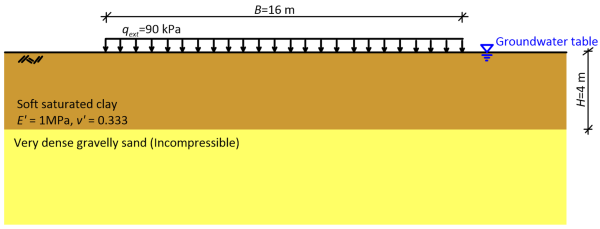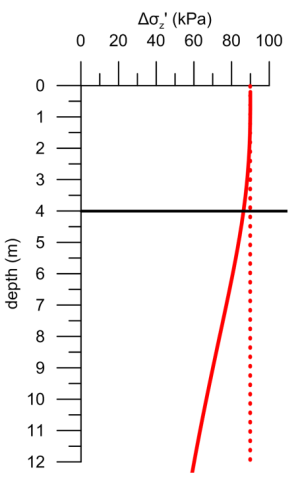Example 4.3
Estimation of 1-D primary consolidation settlement assuming linear elastic soil response
Calculate the primary consolidation settlement due to the strip pressure of the figure, assuming linear elastic soil response.

Answer:
The width of the loaded area B = 16 m is large, compared to the thickness of the compressible layer H = 4 m, B > (3 to 4)H so we can effectively assume 1-D consolidation conditions. After excess water pore pressure has dissipated, the additional effective stress Δσ′z due to the application of the external pressure will be equal to the applied pressure i.e., Δσ′z = qext = 90 kPa. In order to apply Eq. 4.24 to find the final value of consolidation settlement, we have to estimate first the coefficient of volume compressibility from Eq. 4.23 as:
![]()
Substituting in Eq. 4.24 yields:
![]()
Note that the effective stress in Eq. 4.24 is the additional effective stress due to application of the pressure, not including the geostatic effective stress: settlement is due to changes in effective stress, and is not related to its absolute value when linear elastic response is assumed.
The actual distribution of vertical stresses beneath the axis of the strip pressure is shown below, calculated according to the mentioned in Chapter 3.4. It is clear that assuming the additional stress in the compressible layer to be constant and equal to the applied pressure on the surface Δσ′z = qext = 90 kPa is a quite reasonable assumption, when the thickness of the compressible layer is small compared to the width of the pressure B > (3 to 4)H.


